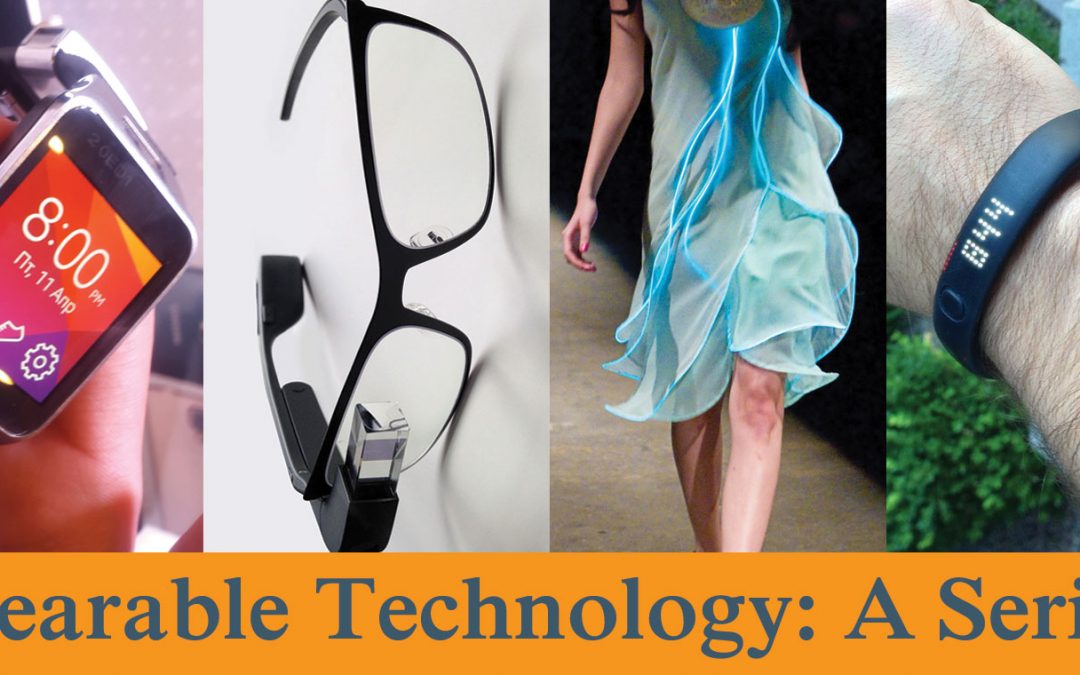When I left for college, I went with a Nokia brick phone I’d gotten after high school graduation, a new (and heavy!) Gateway laptop with an external wireless card and interchangeable CD and disk drives, and my trusty TI-83 calculator. Some students didn’t have phones and others didn’t have their own computer, coming with maybe one tech device. And while I pulled books off library shelves, took (meticulous) notes on key coded index cards, and highlighted my textbooks with a color-coded system, such study habits are going the way of the card catalog.
The 2014 “The Impact of Technology on College Student Study Habits” report from McGrawHill Education showed that 81% of students use mobile devices to study, and that the use of such technology has positively impacted their grades and allowed for a decrease in necessary study time. With a 40% increase in mobile device usage among college students for studying, one can only imagine the impact wearables will have not only on study habits, but the teaching-learning environment as a whole. In probably just a few years’ time we’ll have BYOD (Bring Your Own Device) classroom milieus where students will, let’s say, wear FitBits and be tracked in real-time during gym class.
Maya Georgieva, the Associate Director of the Center for Innovation in Teaching and Learning at New York University’s Stern School of Business said in an interview last year, “Wearables are a new cycle of technology that bring their own potential to be explored, and we need to focus on how it will shape the student experience….It will not be just making sure the content can flow through these devices, but focusing on creating interactions and fostering innovative student-learning experiences.”
It’s not just about getting wearables into the classroom, but making sure that practical learning with these new devices is valuable to students.
Let’s Take a Trip
It’s always a highlight for elementary school students to get to take fieldtrips (and, admittedly, I still loved them when I was teaching!), but oftentimes distance and funding get in the way of certain experiences. While some things are always going to be best done in person – like the band trip to Disney World – there is potential for other unattainable moments to be brought to students.
Recall the scene in Bones where Angela creates the Louvre for Cullen’s daughter who is dying of cancer and “transports” her to the gallerie in Paris via a pair of virtual reality glasses. With telepresence technology like the HTC Re Vive and Oculus Rift on the horizon, and the Samsung Gear VR already available, the possibilities for “taking” students anywhere in time and space is boundless. How amazing would it be to stand on the edge of a meteor or inside a volcano? Or perhaps you’d prefer an immersive and interactive historical game that allows you to work side-by-side with Harriet Tubman on the Underground Railroad or on a vineyard in 1700s Burgundy.
If you are able to get out on the streets where history happened, the progression of works like the HistoryPin Project, or adaptation of apps like Walking Through Time or Streetmuseum, have the potential when paired with wearable augmented reality devices like the Microsoft HoloLens or Google Glass to bring both historical spaces and events – and the future – to life in interactive elearning spaces. As Marshall McLuhan wrote all the way back in 1962, “The new electronic interdependence recreates the world in the image of a global village.”
Down and Dirty
And wearables aren’t just for the classroom. Take such technology into a practical learning environment like an operating room. A paper projecting uses for tech like Google Glass outlines a scenario where a medical resident is able to perform a surgery she’s assisted with several times for the first time as the lead while the attending surgeon watches the procedure on a computer from a first-person point of view outside the OR. The authors note that wearables have “the potential to bridge these diverging interests of independent training and patient safety.”
With additional products like Narrative Clip and Autographer poised to capture moments (either by set time frame or perceived importance, depending on the technology), researchers are able to have both hands free to do their work while still documenting the scientific process.
With a plethora of devices in various stages of development, the biggest obstacle with wearable tech continues to be battery life. Heading to a marsh for a multi-day experiment may not be feasible unless you pack in extra batteries or turn off your devices to conserve life. As wearable technology continues to develop, it is only practical that battery technology will mature alongside.
Stay tuned for more in this wearables series:
- Business
- Sales & Marketing
- Medicine
- Education
- Design & Product Development
